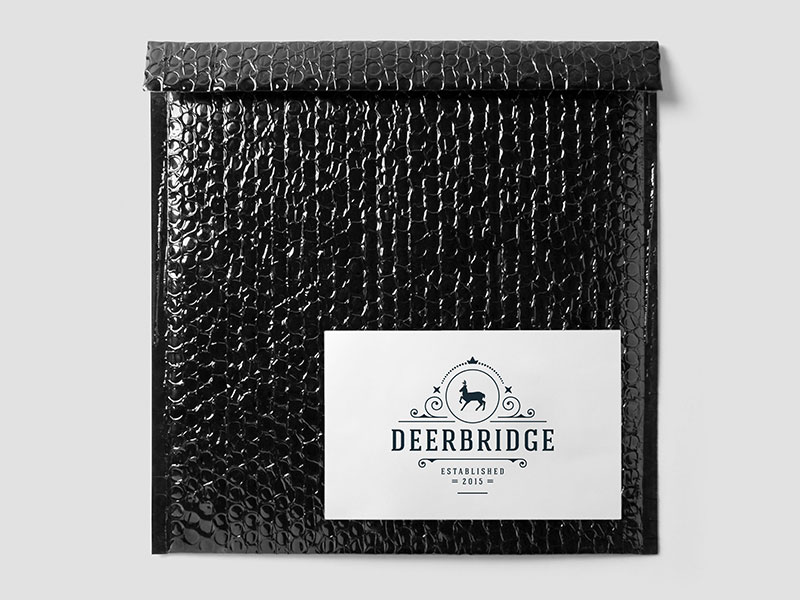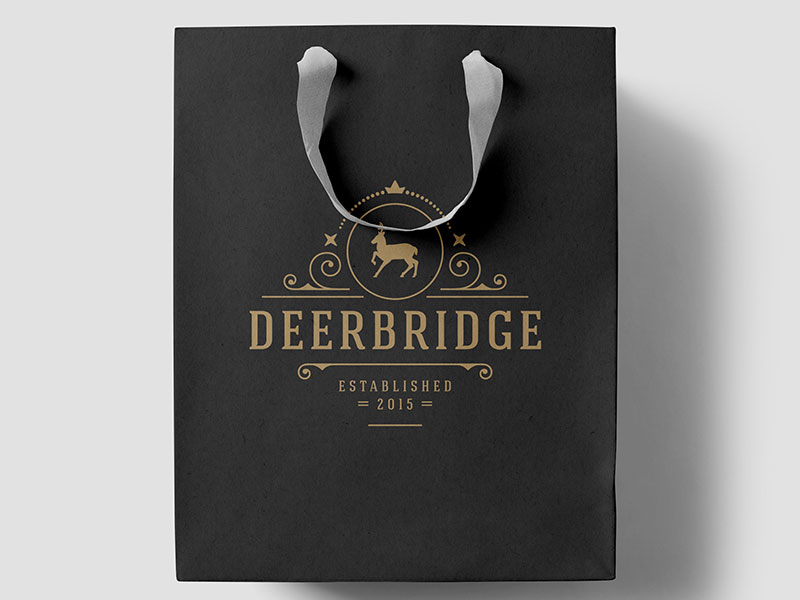Do you ever wonder how successful businesses have made their mark and exclusive place in the ever-competitive market? The simple answer is to create a unique brand identity system.
Brand Identity System is made from different elements that work together to set up consistent and adaptable brand assets that help convey your brand value to the target audience.
This article will be a complete guide for all those struggling to build their brand’s identity. It presents a detailed analysis of why a brand identity system is vital for your startup, how to go about it, and what to look out for.
What is a Brand Identity System?
A Brand Identity System is defined as a collection of elements which work together to create unified, consistent and flexible brand assets that communicate the brand value to the target audience effectively.
This collection of elements constitutes of 6 major brand assets including the primary brand mark or logo, secondary brand mark, color palette, typography, visual brand extensions (such as official brand pattern, iconography etc) and brand tone (which includes visual image and photo standards as well as the tone of voice in all messaging and communications) and help create an awesome brand.
While each of these brand identity system elements is a topic onto itself, in this article we will define each briefly to create a context for the importance of having a brand identity system for a successful brand development.
This article is one of the lessons from my Ultimate Brand Builder Course. By completing the course you will have built a robust and stunning brand that will be poised to attract your target audience and dominate your market space.
Why is a Brand Identity System Essential for Your Business?
A clear understanding of the importance of a brand identity paves the way for every action that follows, such as adding visual elements to your brand, targeting the external audience, designing, and promoting.
Personality
 So there are billions of people in the world. Yet, they are all “different.” Some traits and aspects set them apart from the rest. We all differentiate from others, from different nationalities to cultures, races, religions, or even more complex elements such as our habits and preferences.
So there are billions of people in the world. Yet, they are all “different.” Some traits and aspects set them apart from the rest. We all differentiate from others, from different nationalities to cultures, races, religions, or even more complex elements such as our habits and preferences.
The same is true for brands. Hundreds of brands might offer the same product or service, yet what will make them stand out is how they are “exclusive” in their “personality.” Simply put, a Brand Identity System develops a unique personality for your brand that people know you by.
For instance, your brand can have a “formal” or “casual” personality. It can be serious or retro. It can be to the point, like a corporate head, or more engaging, like a media enthusiast. What personality you choose will not only define your brand but will continue to be the face of your brand for years to come.
Uniqueness
 As mentioned earlier, uniqueness is the key to identification. Everything unique gets attention. Therefore, brand differentiation is essential. A distinctive brand identity system makes your brand stand out from the crowd. It makes it different from its counterparts.
As mentioned earlier, uniqueness is the key to identification. Everything unique gets attention. Therefore, brand differentiation is essential. A distinctive brand identity system makes your brand stand out from the crowd. It makes it different from its counterparts.
The difference between your brands may be subtle. On the surface, you might not even know how your brand is different because it might not be. However, a brand identity system is essential because it has the potential to dig and explore every minute detail of your setup and identify its uniqueness.
Consistency
 As they say, consistency is key. Being consistent in your actions brings desired results. But, especially for a brand that has just taken its first step into the global market, constantly wavering from one tone to another or changing your motto and logo can cause serious damage to your identity and reputation.
As they say, consistency is key. Being consistent in your actions brings desired results. But, especially for a brand that has just taken its first step into the global market, constantly wavering from one tone to another or changing your motto and logo can cause serious damage to your identity and reputation.
An individual brand identity system brings consistency to every activity and campaign you start for your brand. This consistency builds and establishes your brand as an exclusive entity and allows relevant people to find you almost instantly.
Awareness
 A sound brand identity system creates awareness among potential customers, which serves as a filter for buyers and sellers. Brand awareness is an excellent tool that offers customers convenience and gives your brand a strong standing.
A sound brand identity system creates awareness among potential customers, which serves as a filter for buyers and sellers. Brand awareness is an excellent tool that offers customers convenience and gives your brand a strong standing.
For instance, a boutique offering a professional clothing line will instantly draw attention from all working men and women. As a result, they will prefer this brand for workwear before looking for other options. This exclusiveness results from a brand identity system that filters customers for a brand and creates awareness among the target audience.
Loyalty
 A brand identity that caters to exclusive problems and resonates with a specific audience creates brand loyalty. Yes, brand loyalty is real.
A brand identity that caters to exclusive problems and resonates with a specific audience creates brand loyalty. Yes, brand loyalty is real.
Statistics report that 72% of global consumers have loyalty toward at least one brand. What if your brand becomes one of those brands?
A brand identity system builds your brand in ways that bring loyalty. Your customers prefer you because your products or services resonate with them. While generating more clientele is essential, building customer loyalty is even more so.
Elements of a Successful Brand Identity System
A successful brand identity system is a combination of elements that work together to create a consistent and memorable brand experience. Let’s explore the key elements of a successful brand identity system, guiding you in crafting a compelling, unique, and authentic brand presence.

Brand Asset #1: Primary Brand Mark
The first and the most visible symbol of brand power is the primary brand mark or logo design. It should be as simple as possible and tend towards conceptual and abstract visual elements rather than literally trying to show what your brand does or stands for.
The primary brand mark should be flexible enough to work well across various different media and at all sizes. It should be easy to reproduce and must use solid design principles. At the very least, a good logo design should have these six qualities:
- The logo should be scalable
- In most cases, the logo should have solid colors
- The logo should be adaptable
- The logo should be memorable
- The logo should be unique and
- The logo should be on message

Brand Asset #2: Secondary Brand Mark
For many, the idea of a secondary brand mark may be alien. In fact, till recently, the golden rule of branding was to have one logo consistent across all media and used unchangingly for years. But the landscape and the definition of a brand identity have changed.
Everyone is a publisher these days with their publishing channels such as blogs, social media channels, etc. The internet has become more than an information super highway. It has become a noisy and chaotic environment where information is dumped alarmingly fast. The signal-to-noise ratio is so high that people are starting to block out and filter the internet.
How can a brand stand out and thrive in such an environment? This is where the secondary brand mark comes into play. It supports the primary brand mark and enhances the message funnel of the brand. It is used on secondary touch points such as merchandizing, brand marketing collateral, social media campaigns, etc.
A secondary brand mark is vital for lifestyle brands such as clothing and fashion brands. It is used to create brand recall and touchpoints such as labels, tags, etc.

Brand Asset #3: Color Palette
Most brands have a signature color scheme, whether it is black and white or a more creative palette. However, many companies think that their carefully chosen colors are limited to their letterhead, logo, and signs. However, using your colors throughout your business will give a better rounded experience to people who interact with your business while helping to make those colors synonymous with your brand.
Owning a color in your market segment should be one of the goals of your branding. If used strategically, you can own a color which your target audience come to associate with your brand. At times, this can be so effective that just the color will remind people of your brand with out the primary or secondary brand marks visible.
When choosing colors for your brand, base them on their suitability to your brand along with ensuring they align with the world view of your target audience. Your personal preference as the stake holder of the brand should come last.
As with your brand mark, you should have a primary color and secondary and tertiary colors. This color palette should then be used effectively to communicate the essence of your brand.

Brand Asset #4: Typography
Typography is fundamental to establishing a robust brand identity system. Selecting the right fonts to represent your brand could be a daunting process and most brands simply make random choices based on personal preferences.
Type faces have personality and you should try and identify typography that matches the personality of your brand. Different types evoke different feelings. For example, typically serif type faces represent tradition while san-serif ones stand for modernity. Some fonts look friendly while other look corporate.
As with colors, your brand should have a primary type face which is usually used in your primary brand logo. Unless you have a custom type face in your logo design, you can also use the primary type face for headlines and other important messages of your brand. You have to use this primary font judicially so that you do not dilute the primary brand logo. Secondary and tertiary type faces should ideally be complimentary to the primary typography.

Brand Asset #5: Visual Brand Extensions
Visual brand extensions are design elements that support and enhance the brand’s visual experience. These could be things such as the official brand pattern, iconography etc.
Having an official brand pattern that is used as subtle part of the brand’s visual makeup can go a long way in creating a high level of brand recall. They reinforce the brand’s message and let the audience know that the brand cares about details. This in turn expresses the message that the brand is consistent and trust worthy.
Iconography can be another powerful tool in your brand’s arsenal. Custom icons created specifically for your brand can establish a direct subconscious connection with your target audience. Icons can be used to create visual anchors that permeate your branding efforts and that enable you to broadcast the brand message effectively.

Brand Asset #6: Brand Tone
Last, one of the essential brand assets is your brand tone. A brand tone is your brand’s personality that assigns a unique art of identity. You want your brand to convey this impression or perception when interacting with people.
You want your brand to convey this impression or perception when interacting with people.
A brand tone is what your brand says, but more importantly, it is said. Good messages take your competitive positioning and brand strategy to the next level. They hone in on what’s essential to your market and communicate it consistently and effectively. How you respond when asked about your brand or service, or product and the tone of your messaging has a tremendous impact on how your target audience perceives your brand.
Your brand tone can manifest in the following ways:
- Your brand elevator pitch
- Your positioning statement
- Your vision and mission statements
- Your brand’s tagline and slogan
- Your press releases
- Your social media communication
- Your blog posts and articles
- Your communication style – via email, phone or face to face
Frequently asked questions
How do I develop a brand identity system for my business?
To develop a brand identity system, follow these steps:
- Define your brand strategy, including your mission, vision, values, and unique selling proposition.
- Identify your target audience and understand their needs, preferences, and pain points.
- Develop a brand personality that reflects your brand’s essence and resonates with your target audience.
- Design a memorable logo that embodies your brand’s personality and values.
- Choose a consistent color palette, typography, and visual elements that support your brand’s identity.
- Create a brand style guide to ensure consistency across all channels and touchpoints.
- Apply your brand identity system consistently across marketing materials, packaging, website, and social media channels.
How can a brand identity system help me differentiate my business from competitors?
With a distinctive brand identity, you promise results that your competitors leave. In addition, a strong and lasting brand impression positions you better in solving problems, delivering quality products, and addressing concerns.
Although these differences may be subtle, your brand identity highlights this difference, which helps attract an audience that understands and wants the exact thing.
How does a brand identity system build trust and credibility with customers?
How can I maintain consistency in my brand identity system across all channels?
To maintain consistency in your brand identity system:
- Develop a comprehensive brand style guide that outlines guidelines for logo usage, colors, typography, and visual elements.
- Train your team on the importance of brand consistency and provide them with the necessary resources and tools.
- Regularly audit your marketing materials, website, and social media channels to ensure alignment with your brand identity system.
- Work with partners and vendors who understand and respect your brand guidelines.
How do I measure the success of my brand identity system?
Measure the success of your brand identity system by tracking both quantitative and qualitative metrics, such as:
- Brand awareness: Surveys, social media mentions, and website traffic.
- Brand engagement: Social media interactions, email open rates, and content shares.
- Customer loyalty: Repeat purchases, referrals, and customer lifetime value.
- Overall business performance: Sales, revenue growth, and market share.
What are some common mistakes to avoid when developing a brand identity system?
Common mistakes to avoid when developing a brand identity system include the following:
- Failing to define a clear brand strategy and target audience.
- Inconsistency in visual elements and messaging across channels.
- Overlooking the importance of a professional logo and design elements.
- Ignoring the evolving needs of your audience and market trends.
- Neglecting to create and follow a brand style guide.
A common perception is that the brand identity system involves making a logo. This is the first mistake that you must avoid. A brand identity system is a lot more than just a logo. It is defining a complete roadmap that your brand works on.
When working on your brand, not understanding your audience can be detrimental. This lack of understanding reflects the absence of a consistent style, website design inconsistencies, and improper business tone.
Always be careful to avoid improper tones in your communication. Communicating in the right language with appropriate words is a key element of your brand identity system.
How can I evolve my brand identity system over time to keep it relevant and effective?
To evolve your brand identity system:
- Regularly review your brand strategy to ensure it aligns with your business goals and market changes.
- Stay updated on industry trends and customer preferences to identify opportunities for brand evolution.
- Conduct periodic brand audits to assess the effectiveness of your brand identity system and identify areas for improvement.
- When necessary, refresh your brand identity elements, such as logo, colors, and typography, while maintaining brand recognition.
- Engage with your audience to gather feedback and insights on how your brand identity system resonates with them.

